Adapt or die… That is the universal ultimatum, and retailers in the factory built housing industry are no exception.
Well, spring is just around the corner and for most of you, the snow is melting and the “season” is about to get under way. You have survived yet another winter and you are most likely looking forward to increased activity. But\ are you really ready? Are you really prepared to harvest as much business as possible over the next 8-10 months or are you going to suffer through another less-than-stellar year? Flourish or perish, the choice is truly yours. In this article I will give you what I believe to be the 5 essential elements for not only survival, but to actually be extremely profitable. That’s right… I said “extremely profitable”.
If history is allowed to serve as a teacher, then I am absolutely convinced that while the overall future of this industry may look a bit more challenging than you would like, there will be retailers who will make as much profit this year as the most successful retailers did when our industry was experiencing better times. Interestingly enough, whether you think this is possible or not, you will be right. What we do know is that we cannot “change” the economy, but we can certainly learn to be profitable within our economy. Some of the retailers, communities and developers that will embrace these 5 principles will have good years, others will have great years, but everyone will benefit.
The Status Quo
Before I share these 5 principles, let me first address what I see that is NOT being done. I see still way too many retailers or community operators sitting with their thumb up their proverbial derriere waiting for things to change. If that describes you, here’s the news… things WILL change… but not in your favor unless you MAKE something happen. Stop living under the illusion that the industry is in dire straights and there is nothing you can do about it. Tough times sometimes build character, but tough times always reveal character.
I see retailers all across the country trying to cut more costs by reducing marketing and advertising, reducing commissions, eliminating sales positions, and further reducing inventory. Understand that you cannot simply “save your way to prosperity”. Your revenues MUST outpace your expenditures and I am quite certain that the majority have cut all of the fat out of your organization and any further cuts will slice too deep.
What I am not seeing are enough retailers focusing on the other side of the equation and doing all that can be done to increase sales, increase traffic, increase conversion ratios and following up with current prospects.
Included in your “growth kit” you will find 2 fundamental strategies and 3 disciplines that you have to master. If you understand and embrace these 5 concepts, you will not only survive, but you will be more profitable than you can imagine at this point. First, the 2 basic beliefs:
1st Basic Strategy: Think Small
What I mean by thinking small is to begin developing and structuring a business model that is based on gearing down your operation to a size that is concurrent with your current market. This restructuring of your business has to be based on what is often referred to as a “break-even strategy”. In other words, it is about putting plans into place that allows your organization to be profitable in virtually any market. Keep in mind that markets have always been cyclical. You can be profitable in any market as long as you are prepared to operate within that market and as long as you know what your fixed overhead is and you know how much you need to sell in order to break even and even make money. If you’re struggling with this issue, I would suggest calling Chad Carr at Rainmaker Software (563-359-4441 or chad@getrain.com). I know of no-one who is as adept and knowledgeable about explaining and helping a retail builder implement this very timely and powerful business strategy.
2nd Basic Strategy: Don’t try to “Save your way to Prosperity”
Understandably, one of the first reactions a small business owner has when times get tough is to reduce overhead. One must realize that reducing overhead without having a plan of how to most effectively apply the money that you DO spend, often does more harm than good. If your cutting out the fat in your organization, that’s great. We should do this regularly. If you’re cutting into the muscle of your organization, that can be detrimental, and if you cut off your legs, that can be devastating. When times are tough, you don’t need LESS advertising, you need more EFFECTIVE advertising. You don’t need LESS inventory, you need less DEAD inventory; you need inventory that has a proven track record. In tough times you don’t need LESS sales people; you need your sales people to be more PRODUCTIVE.
1st Discipline: Prospect Acquisition
It is absolutely essential that you have a comprehensive marketing strategy that will put you and your organization in front of every prospect that is shopping for your product in your market place. I realize that all of you have walk-in traffic, and drive-by is a great source for prospects. Many of you spend a great deal of money on increasing your curb appeal and I applaud you for this effort and foresight.
According to our research 87% + of all prospects begin their shopping efforts on the internet. If you do not have a “visible” presence on the internet, you will never see those prospects unless they happen to drive by your location. Having a website is great for promoting your business on the internet, but in order to drive people to your website, you must MARKET YOUR WEBSITE and most business fail to do so.
2nd Discipline: Customer Conversion
Once you have the number of qualified leads you need, it is absolutely essential that you have a specific, documented and measurable process by which you fulfill the inquiries you get from the internet or via phone calls. Here is what you need:
- First, you need a process by which you get these inquiring prospects to your store.
- Second, you need a Sales Process by which you convert the largest number of these prospects into homebuyers. After all, this is the essence of our business.
According to our research, if all other requirements are met as they relate to the sales process, 30% of the prospective home buyer will make a commitment on the very first visit to your location. That means that 70% of the prospective home buyers will either not buy at all, or make a commitment to someone at some time in the future. Your sales people must have the ability to build enough of a relationship and have a specific follow-up methodology in place so that these other 70% of prospects actually will respond when the sales person follows up. There are too many sales people that have all but given up on following up with prospects because their prospects either don’t take their calls, return their calls, show up for appointments and, obviously rarely come back to buy.
- Your effectiveness in your follow-up efforts is in direct correlation to your ability to build a strong relationship with your prospect while they are in front of you.
3rd Discipline: Prospect Management
We are living in the Information Age, which simply suggests that he who gathers the most information, who can analyze this information and who can manage this information… WINS. At least they will win more often than those who do not.
We also know that sales people today are busy, or at least they should be. Sales people should only be focused on two things:
- they should be either in front of a prospect, or…
- they should be busy trying to get prospects BACK in front of them.
I think you get my drift. Sales people should be selling. As I stated earlier, because such a large percentage of prospects are not going to make a buying commitment until a later time, sales people are required to stay in front of and keep up with a fairly substantial number of prospects at any given time. This is virtually impossible unless you have some type of technology working on their behalf. At the very least, not having such a technology is horribly inefficient. Also realize that sales people by default are only going to keep up with people that they believe are going to buy in the very near future… ones that they can SELL. The rest, I’m afraid will fall through the cracks, not because they’re not going to buy, but because your sales person believes that they’re not going to buy in the immediate future. Again, a good prospect management system will avoid losing prospects and increase your sales. If this is an issue, visit www.getrain.com and you will find some really great information.
So there you have it.
While the industry outlook may be less stellar than we would like, there are few, if any, reasons why you should not be very profitable as long as you plan to be profitable and you position yourself to be profitable. Think small, spend wisely, attract quality leads, sell the ones that will buy today and stay in front of those who are not yet ready to make a commitment. Sounds simple… but rest assured that those retailers, developers and community operators who are going to experience high profitability in the next 2-3 years, and I have several clients that are expecting record years, will be paying attention to the 2 basic strategies and the 3 disciplines I just discussed. They will not perish, but they will flourish… and you have the same opportunity.
My gift to you…
For those who do not have as effective and efficient sales process as you would like in place, over the next few months I will be offering a step-by-step sales training program which will be easy to understand and even easier to follow. In appropriate sequence, with each article I will address one step of the sales process and give your sales people a sure-fired system for closing more deals in less time. If you will print and collect all of these 7 articles and keep them in a binder, you and your sales people will have a brief, but poignant sales methodology in place. Follow it and succeed. This is my gift to you, but what you do with it is entirely up to you.
Conclusion…
The ONLY thing that will bring our industry out of the doldrums is enough retailers and sales professionals just like you will step up to the plate and be committed to doing all that they can to knock every ball out of the park. You and others like you ARE the industry.
I, and many others like me, are deeply committed to helping you prosper and our passion for this industry is as strong as ever… but we can’t do it for you. I know you want to not only survive, but also prosper, otherwise you would not be searching through this highly informative website nor would you be reading this article.
So in 2010, let’s lift the bat off of our shoulders and swing… swing hard and swing accurate… and let’s for once, claim our rightful place in the affordable housing industry.
John Underwood has been a sales and sales management consultant in the factory built housing industry for over 25 years. During that time, he has helped literally thousands of sales people reach the level of performance they wished to achieve.
He is also the author of “Scratch Selling: 18 Lessons Golf Will Teach You About Sales“, an author for numerous industry publications, as well as a past member of the Executives in Residence program at the University of Arizona where he spoke on sales and marketing issues.
Mr. Underwood is available to work with your retail organization or community to help you build a more effective and efficient sales organization. He currently resides in Naples, FL and can be reached at:
John A. Underwood
380 Stella Maris North
Suite 2607
Naples, FL 34144
Cell: 520-241-9907
Office: 239-393-0465
sellingedge@aol.com


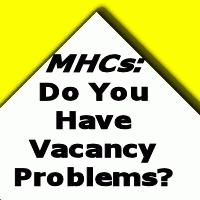

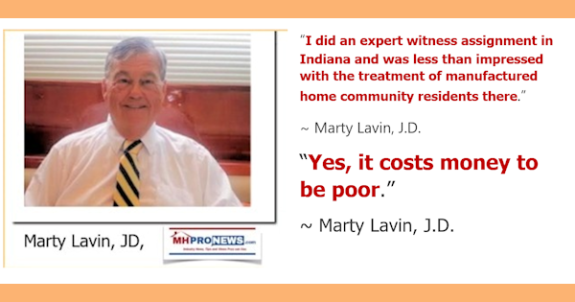
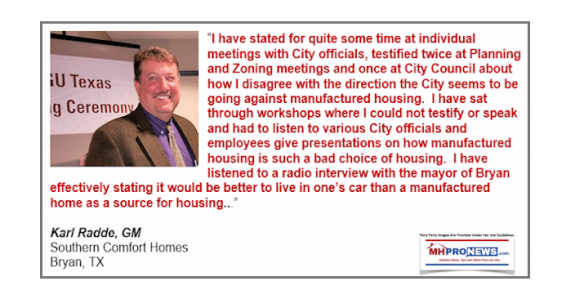
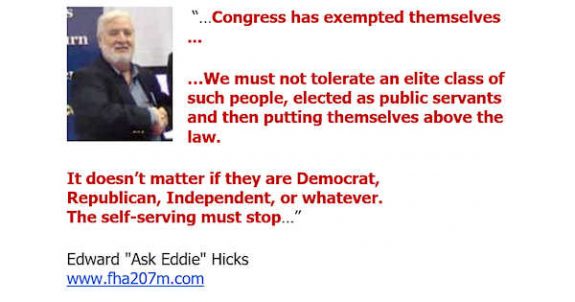
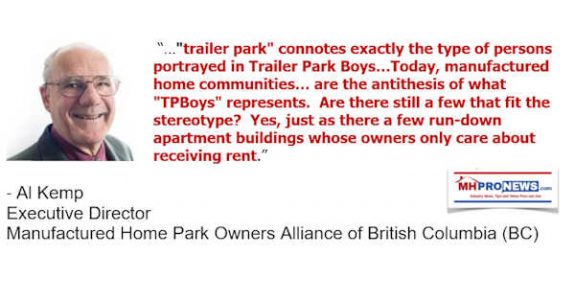
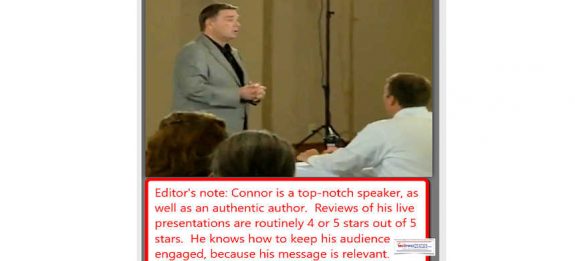

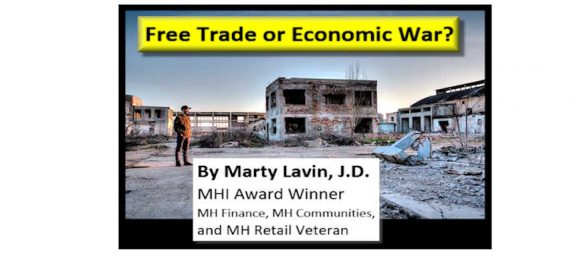
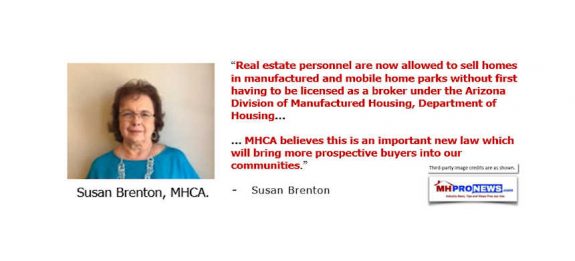
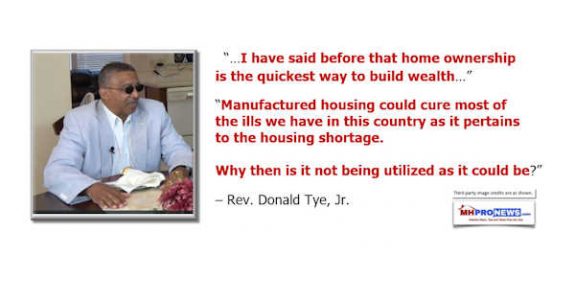
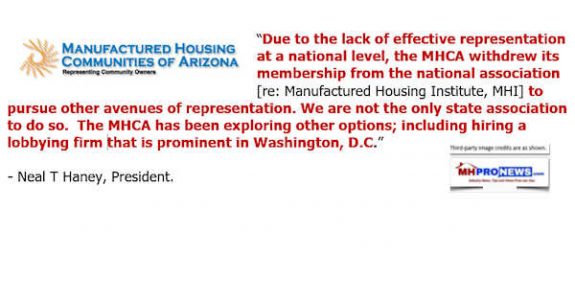
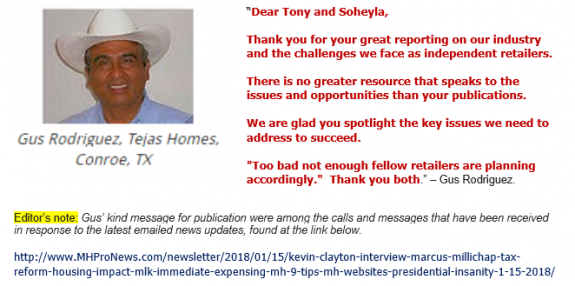

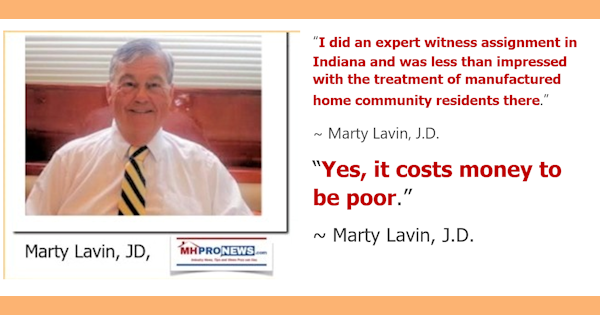
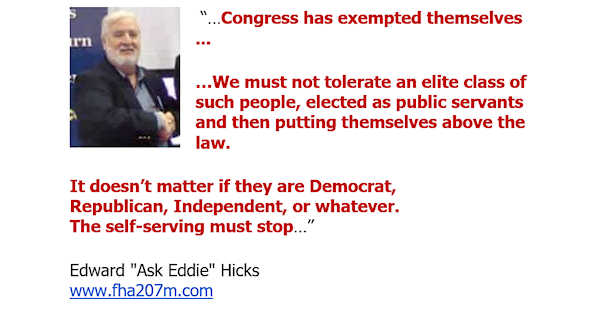
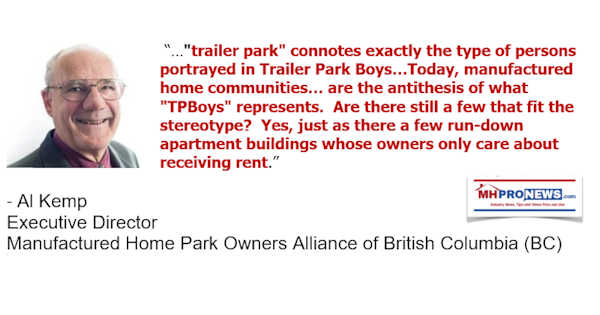
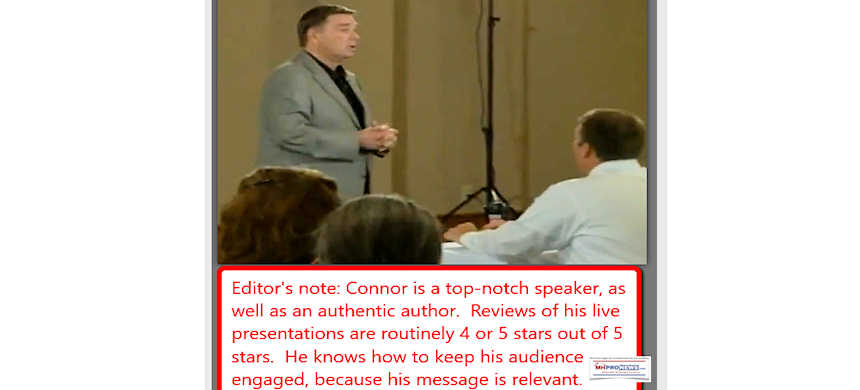

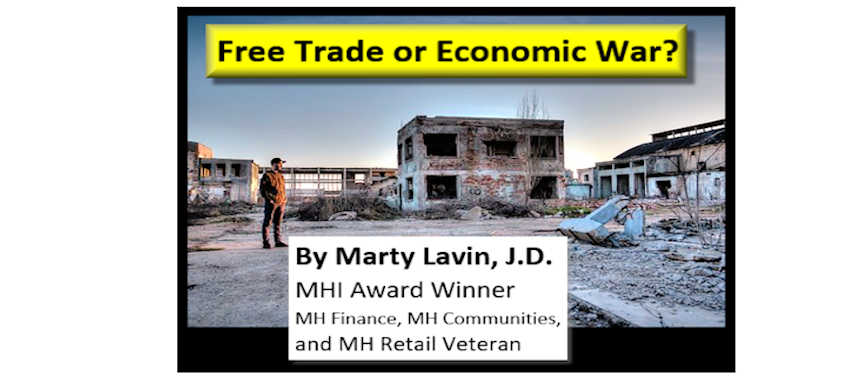
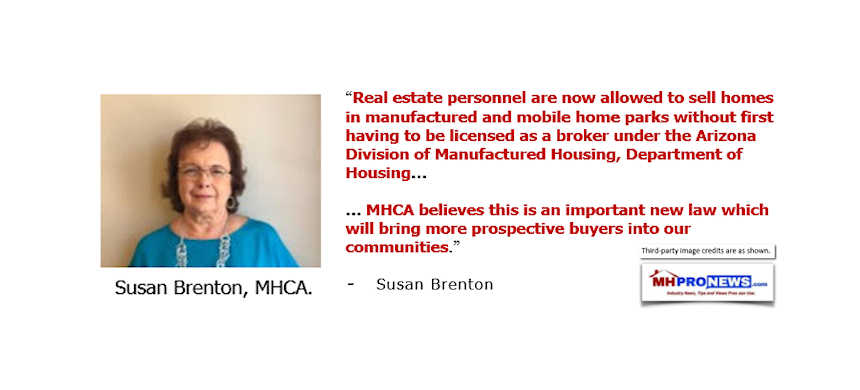

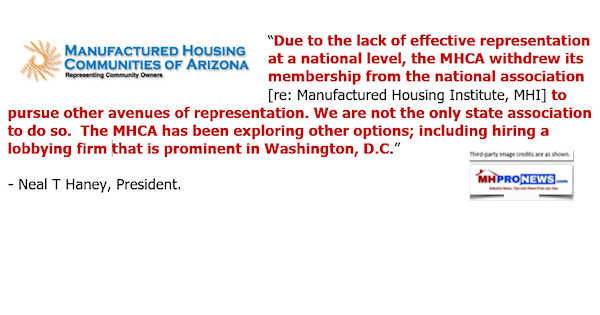
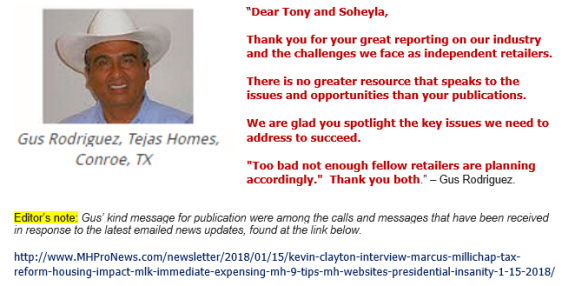

Karl Radde – TMHA, MHI, Southern Comfort Homes – Addressing Bryan City Leaders, Letter on Proposed Manufactured Home Ban
To All Concerned [Bryan City Officials, Others]: As the retail location referenced by Mr. Inderman, I would like to take a moment to address the …